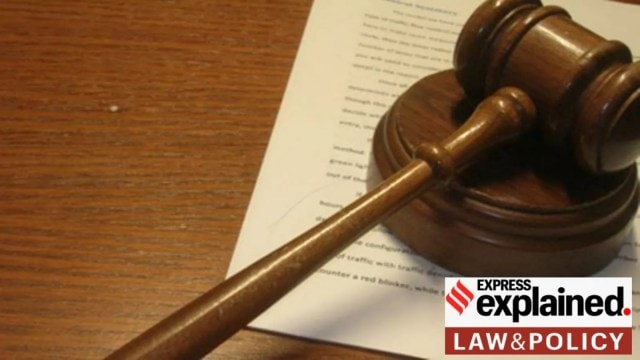At an election rally in Tonk in Rajasthan on Tuesday (April 23), Prime Minister Narendra Modi said the Congress has often tried to give reservation to Muslims by reducing the quota for SCs, STs and OBCs. The PM specifically cited attempts at providing a 5% quota for Muslims in Andhra Pradesh as a “pilot project, which Congress wanted to try in the entire country”.
Several Muslim communities are included in the Other Backward Classes (OBC) reservation both at the central and state levels. The criteria for the OBC quota is social and educational backwardness. Article 16(4) of the Constitution provides for reservation for a “backward class of citizens, which in the opinion of the State, is not adequately represented in the services under the State”.

The OBC quota works differently in different states.
In Karnataka, for example, Muslims had a 4% sub-quota within the 32% OBC quota, which the Basavaraj Bommai government in 2023 redistributed among Vokkaligas and Lingayats. Kerala has an 8% Muslim quota in its 30% OBC quota. Several other states, including Tamil Nadu and Bihar, have Muslim caste groups in their OBC quota.
Andhra Pradesh quota
In Andhra Pradesh, as per the 2011 census, Muslims constitute about 9.5% of the population. Muslim groups such as Dudekula, Laddaf, Pinjari/ Noorbash, and Mehtar are included in the state OBC lists, which have quotas ranging from 7% to 10%. However, there had been a push in the undivided state to follow the Karnataka and Kerala model to include all Muslims in the OBC category.
FIRST ATTEMPT: In June 2004, just a month after the Congress came to power in the state, a Government Order (GO) was issued to the Commissionerate of Minorities Welfare (whose ex offico head was the state’s principal secretary) to look into “socio-economic and educational conditions of Muslim community in the state” to include them as OBCs.
In July 2004, the Commissionerate wrote to the government recommending 5% reservation to “Muslim Minorities in employment, educational and other fields on par with the Backward Classes in the State”. The recommendation was implemented a week later.
Story continues below this ad
On September 21, 2004, a five-judge Bench of the Andhra Pradesh High Court struck down the quota as unsustainable. The court’s ruling was primarily on two grounds.
First, that the quota was brought without being referred to the Backward Classes Commission which was mandated by the state’s 1993 Backward Classes Act. And second, that the quota did not exclude the “creamy layer”, and allowed reservation to Muslims as a whole.
The HC also issued a direction to the state government “to reconstitute the Commission for Backward Classes, and on such reconstitution of the Commission for Backward Classes, the Government shall initiate the process of consultation and forward the necessary material, including the G.O. Ms. No.33, to the Commission for Backward Classes”.
However, one of the key questions before the court was whether “the Muslims as a group are entitled to affirmative action/social reservations within the constitutional dispensation?”
Story continues below this ad
On this aspect, the HC ruled affirmatively. “Reservations for Muslims or sections/ groups among them, in no manner militate against secularism, which is a part of the basic structure of the Constitution. The concept of secularism is based on a benign neutrality to benefit all including religious groups and it seeks to advance “good” for all including religious groups,” the court said.
SECOND ATTEMPT: In June 2005, the state government brought another Ordinance, which again gave a 5% quota to Muslims.
In October, when the Ordinance was under challenge before the HC, the government replaced it with legislation. This time, the Backward Classes Commission had recommended that “the entire Muslim Community is socially, educationally and economically backward and therefore steps shall be taken for providing reservation to the members of the Muslim Community for improving their social, educational and economic conditions.”
The law stated that while the total reservation of the state (SC/ ST and OBC) at that time added up to 46%, an additional 5% to Muslims was justifiable even though it crossed the Indra Sahwney threshold of 50%.
Story continues below this ad
“The Backward Classes population in the State comes to more than 77% of total population and therefore, a further reservation of 5% in favour of Muslim Community in addition to existing 46% of social reservation is considered to be just and reasonable,” the law said.
However, the HC once again struck down the quota on the ground that the committee did not rely on objective criteria to conclude that Muslims as a group were backward in AP.
“The failure of the Commission to recognize the established heterogeneity of the Muslims, its failure to proceed on data collection, statistical, social, educational and economic analyses of the data so collected, restricted to Muslims excluding those classes/groups of Muslims already identified and recognized by the Government as backward classes, constitutes a fatal flaw in the conceptual foundation, adopted methodology and social survey of the Commission’s exercise and introduces an irredeemable infirmity to its conclusions and recommendations,” the court said.
The ruling of the HC was challenged before the SC. In 2010, in an interim order, the SC directed that status quo be maintained till the court had heard the issue.
Story continues below this ad
Before the High Court’s ruling of 2005, some college admissions were made allowing the 5% quota. The top court’s interim order ensured no prejudice to these admissions.
The final hearing in the SC case was scheduled in 2022. However, since one of the issues involved was on the Indra Sawhney 50% limit on quotas, the SC had said that it would hear the case after the Economically Weaker Section (EWS) quota issue was decided.
The EWS quota, which is also in excess of the 50% ceiling, was cleared by the SC in November 2022. However, the AP quota issue is yet to be heard.








































